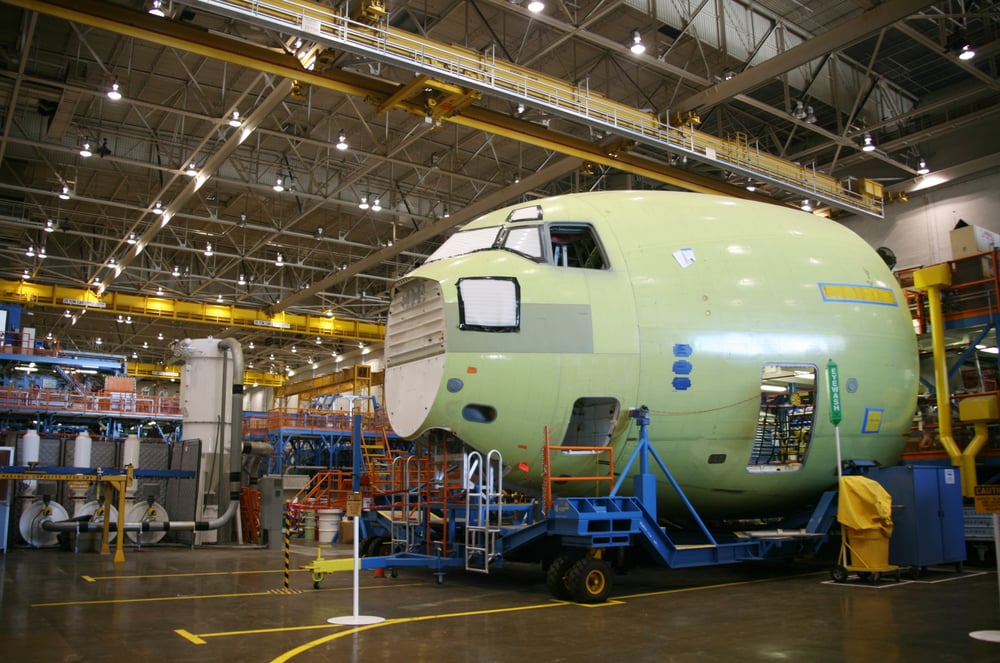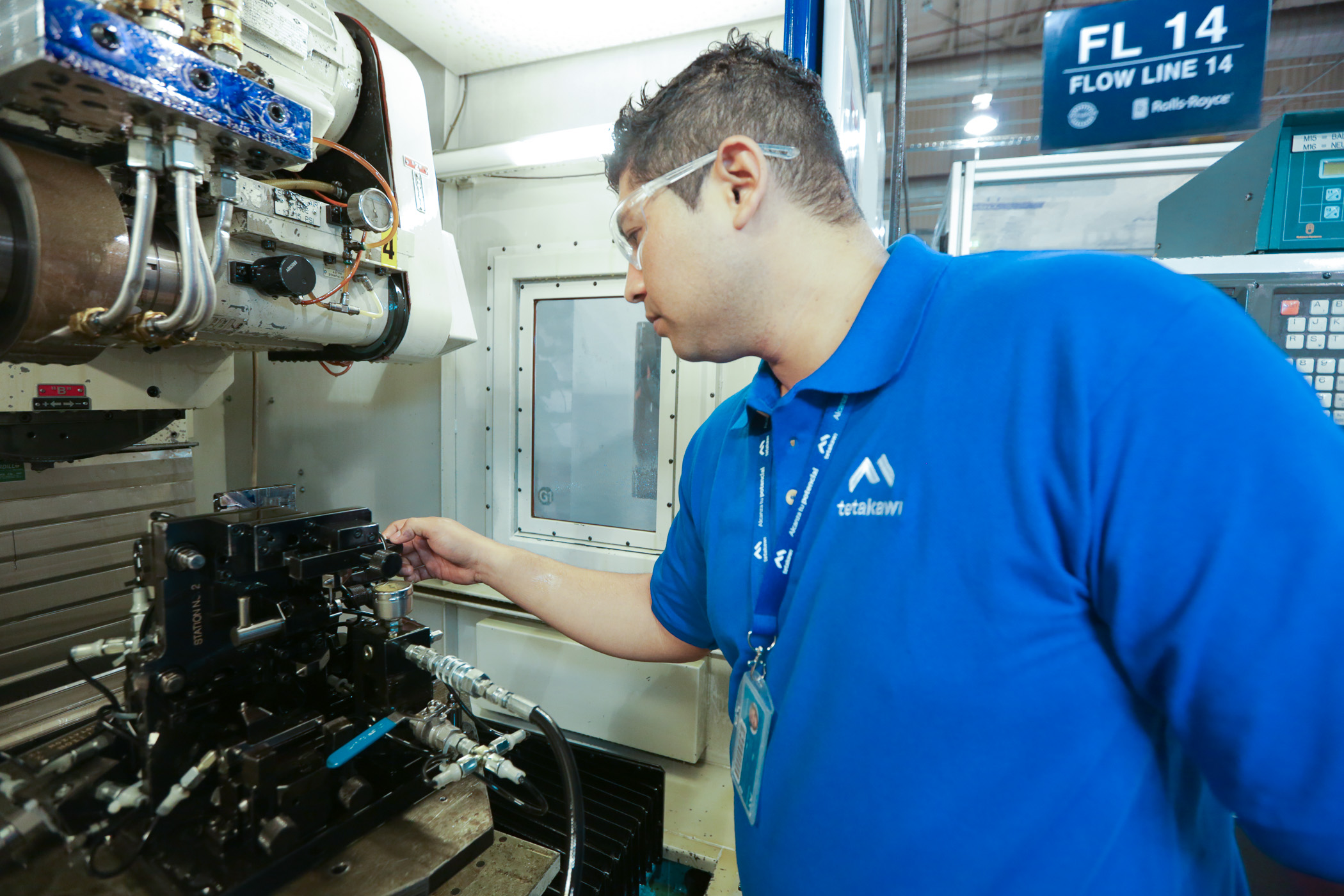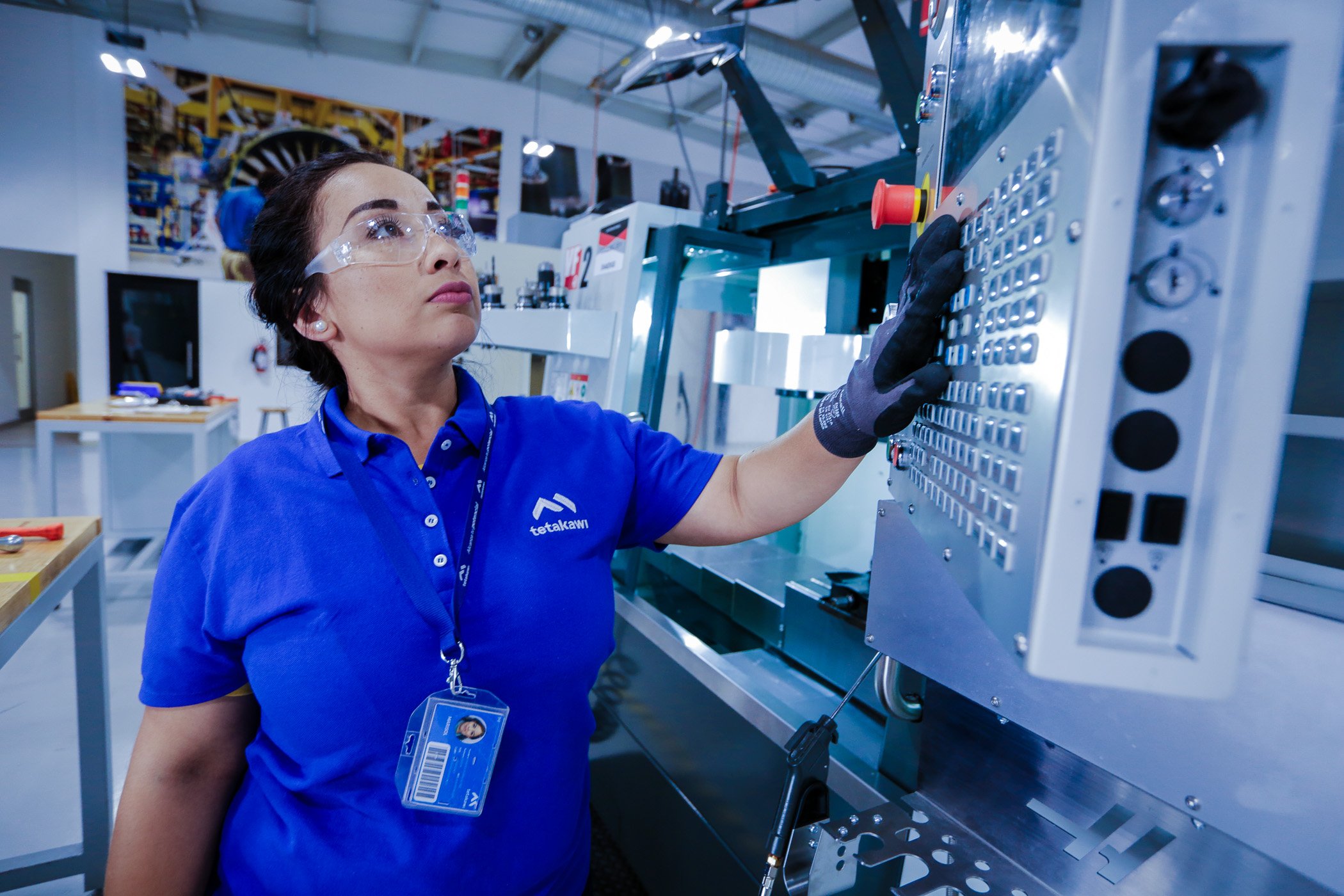The air travel industry is seeing strong growth, and as a result, demand for new aircraft and the aerospace components they require is through the roof. For Boeing, however, healthy demand for aircraft production is just one more problem in a long list of challenges. As Barron’s reports, the aircraft manufacturer is facing shortages across the aerospace supply chain that largely stem from a lack of skilled labor in the aerospace manufacturing sector.
As aircraft, engine, and component manufacturers pivot in the face of worker shortages and other challenges, the search continues for supply chain partners able to meet that demand. This presents an opportunity for suppliers that are positioned to meet this demand. For many such partners, this begins with a manufacturing location that affords them a steady supply of dependable labor.
No end in sight to aircraft production problems

Boeing has had a long path to recovery since its 737 Max aircraft were grounded as a result of hardware and software malfunctions that led to fatal crashes in 2018 and 2019. The company faced additional losses in 2020 when aircraft around the world were ground as a result of the COVID-19 pandemic.
Back in July 2022, CEO Dave Calhoun had reported that the company would focus on stabilizing aircraft production rates for its 737 Max using the parts and labor available before working to ramp up production. Even stabilizing, however, required the aircraft manufacturer to get creative, as shortages ranging from structural castings to skilled labor prevented production. To meet the demand for the 100 737 Max 10 planes Delta Air Lines had ordered, Boeing made plans to remove engines from 737s sitting in inventory, largely awaiting shipment to China, and install those engines on new MAX aircraft.
Then, in February 2023, Boeing reported a $650 million operating loss in the fourth quarter of 2022, surprising analysts who had expected the manufacturer to turn a profit. There was a wide range of reasons for the loss, some of which could be traced through suppliers, including engine manufacturers General Electric and Pratt & Whitney, a division of Raytheon Technologies.
For their part, engine suppliers are attributing shortages to one cause in particular: lack of labor.
“There are a lot of things we can’t get done because we don’t have the people,” commented Raytheon CEO Greg Hayes in an interview on CNBC’s “Worldwide Exchange.”
Worker shortages at the root of casting scarcity
While workforce shortages are a problem across the supply chain, Boeing and rival Airbus point to the casting industry as a prominent source of bottlenecks. Casting is used in virtually every aircraft component. The process requires intensive hands-on finishing, and it takes time to train new staff on the required skill sets.
Much of the supply has traditionally come from two foundries, Howmet Aerospace, and Precision Castparts Corp. While aircraft manufacturers search for additional casting suppliers, suppliers are on the search for more labor to fill the demand.
Aviation Week notes that many industry observers are watching Consolidated Precision Products (CPP), a Cleveland-based company casting company that is investing heavily in its manufacturing capabilities. The company has 19 global facilities, including a location within the Roca Fuerte manufacturing community in Guaymas, Mexico. In Guaymas, a well-known aerospace manufacturing hub on the coast of Sonora, CPP’s manufacturing investment includes a formal agreement with the Technological University of Guaymas (UTG). UTG provides tailored study plans to help students gain training in cold welding, an in-demand skill for CPP and other casters.
UTG and many other training facilities are gearing up a new generation of workers to provide these in-demand skills as more manufacturers evaluate Mexico as a location for skilled labor challenges. Mexico has been a leader in casting, with more than 25,000 companies related to the die-casting sector alone. More importantly, Mexico offers companies an opportunity to expand their market share with the promise of a dependable source of long-term labor and an end to worker shortages.
Manufacturers see labor advantages in Mexico
Mexico has long attracted manufacturers due to the potential for lower labor costs in combination with reduced shipping times. However, this focus on cost ignores a far more compelling advantage. Sixty-six percent of Mexico's population of approximately 128 million is economically active, and forecasts predict that this will increase through 2060 before population growth stabilizes. This provides the promise of long-term stability for manufacturers in search of a workforce. And, while Mexico’s labor costs are competitive, there is no compromising on quality. Because manufacturing is a core part of its economy, Mexico has invested in training at the university and vocational levels to connect people with jobs and foreign companies with incentives to invest.
These training centers can often be found in dedicated industrial clusters where economies of scale magnify the impact of training investments. For example, UTG is positioned to strengthen the aerospace manufacturing skillsets in hot demand in Guaymas. This port city has become one of the premier venues for high-tech manufacturing in Mexico, with a focus on aerospace engine component manufacturing. The city offers a talented labor pool, high employee retention rates, excellent training facilities, and strong connections to the local community and government.
Guaymas also offers proximity to Hermosillo, which has grown into a center for aerospace manufacturing. The city’s long history in automotive production has developed a workforce with many transferable skills. As a result, Hermosillo has become a choice city for manufacturers in search of a highly skilled workforce and investments in education and technology.
Together, these two cities provide a good balance between more competitive costs compared to those found in Mexico’s border cities and proximity to the aerospace industry in Arizona and across the United States.
Provide the stability your supply chain partners seek
As it continues to move toward recovery, Boeing is examining how its supply chain partners operate to ensure excellence in supplier performance, delivery, and quality. The company emphasizes its value on safety, quality, transparent communication, and the fundamental need for delivery performance from its suppliers. As it works through ongoing supply chain challenges toward more reliable aircraft production, it will need stable suppliers well-positioned to deliver.
For foundries and other aerospace component manufacturers, Mexico’s talent may provide the competitive key needed to surge ahead.
To evaluate how a site in Mexico can provide your company with a competitive edge, we invite you to contact Tetakawi to learn how we can help you expand into Mexico.
Subscribe
Sign up and stay informed with tips, updates, and best practices for manufacturing in Mexico.






